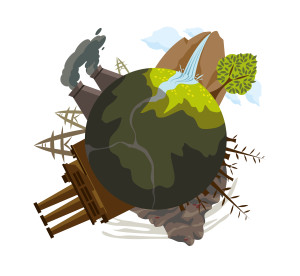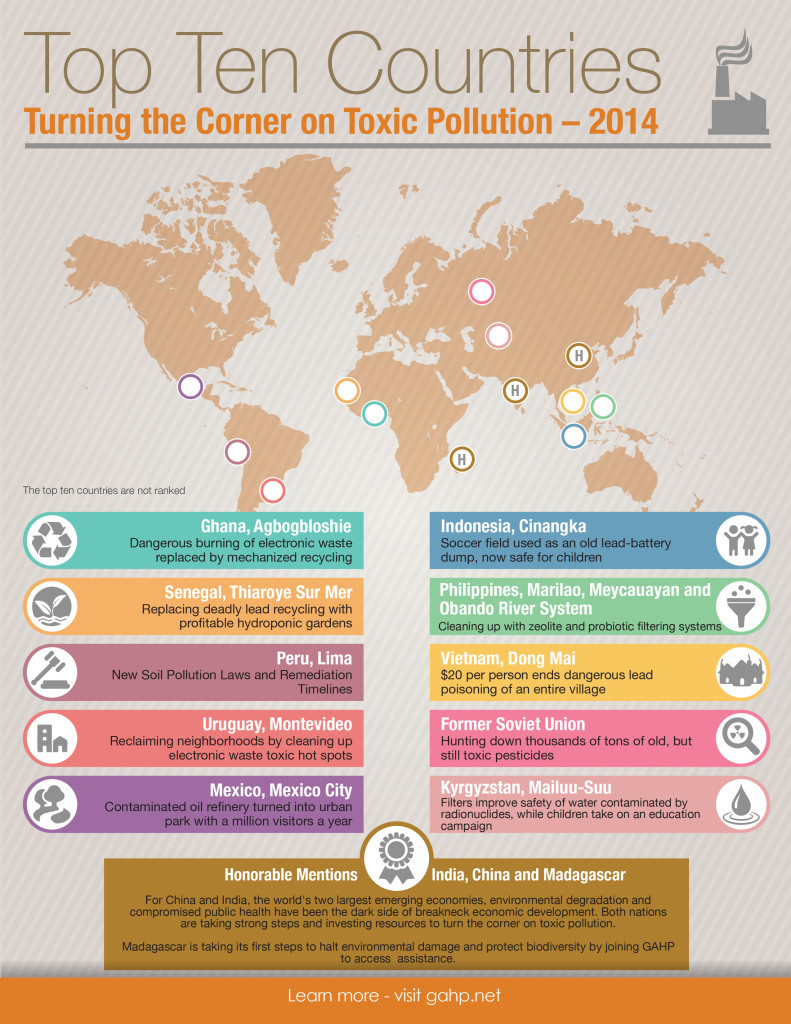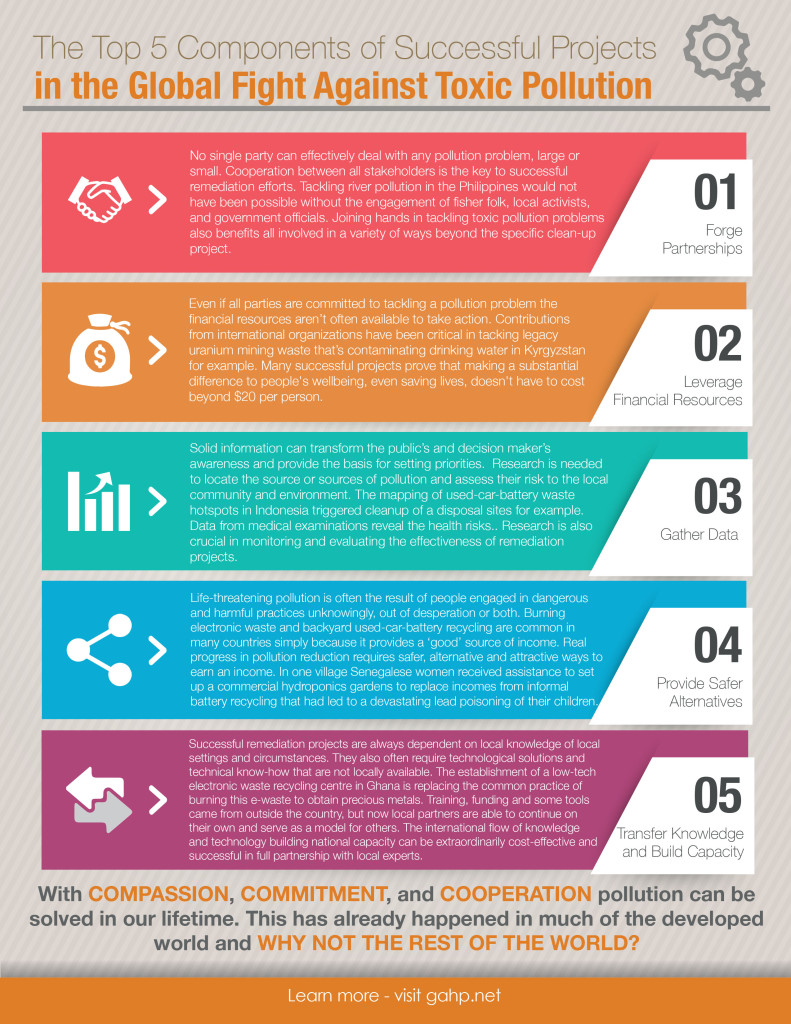Air, water and soil pollution are the hidden global health crisis that’s spreading throughout low- and middle-income countries fueled by industrialization and rapid globalization. Bodies and brains are damaged by exposure to lead, mercury, chromium, obsolete pesticides and a host of other chemicals at thousands of toxic sites. In some of the world’s worst polluted places, life expectancy can be as low as 45 years.
Equally unrecognized is the tremendous economic impact: billions of dollars are lost to soaring health costs and lost productivity. Air pollution alone cost China a staggering $924 billion in 2013, as this new report reveals.
Progress Despite an Immense Resource Gap
The Global Alliance on Health and Pollution (GAHP) joins the publication this year and brings a deep understanding of the pollution problem. “94% of the burden of disease caused by pollution falls on people in low- and middle-income countries who are the least equipped to deal with the problem,” explains Dr. Jack Caravanos, Research Director, Blacksmith Institute for a Pure Earth (See infographic “Pollution: The Silent Killer of Millions in Poor Countries”).
“These countries have to tackle many urgent priorities and are only able to allot 1 to 2% of their national annual budget, or less into environment and health,” says David Hanrahan, Senior Technical Advisor to GAHP. In poorer countries, this results in annual expenditures of perhaps a few hundred thousand dollars, which often has to cover the full range of activities.
Compare this to the Netherlands expenditure of 930 million dollars (791 million euros) on air pollution alone in 2012 — and the United Kingdom investing 22.5 billion dollars on environmental protection in 2010 according to the OECD. This spending disparity in no way reflects the actual need.
A low-income country may have thousands of toxic sites as bad or worse than anything high-income countries once had in the 1950s or 1960s, but which now have been turned into productive assets.
“But as recent projects in Vietnam, Uruguay and Indonesia prove,” says Fuller, “removing the threat of chronic exposure to high-levels of toxic pollutants, can be achieved, in a matter of months for a cost of $10 to $20 per person. Rapid assessment and remediation processes have been proven. All that is needed to scale up in many locations is additional funding.” (See details in report www.worstpolluted.org)
Cleaning Up Pollution Helps the Climate Crisis and Protects Biodiversity
“Pollution, climate change and biodiversity threats are intimately related,” says Nathalie Gysi, Director, Green Cross Switzerland. “Reducing and cleaning up pollution from toxic sites not only improves the health of people, it improves the health of natural ecosystems upon which we all depend.” Any efforts to reduce air pollution have a direct co-benefit of reducing emissions of carbon dioxide, the principle greenhouse gas.
For more infographics, visit worstpolluted.org.
Additional information can be found at gahp.net.
Bonus:
Listen to the latest full episode of The Green Divas Radio Show…
[dynamic-sidebar id=’Custom Widget 2′]


Betsy (Eco-novice)
January 29, 2015 at 7:53 pm
This is so tragic. Industry making money at the expense of the health of everyday people. I’m glad there are some success stories!
Tamara Rubin
January 30, 2015 at 12:48 pm
Thank you for for writing this, Lynn. Will share on my page!